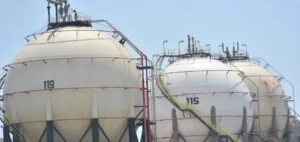In the current context of the American presidential elections, the question of natural gas development in Pennsylvania is becoming a central issue.
This territory, known for its vast gas resources and production via hydraulic fracturing, is turning into an ideological battleground between the two main candidates, Donald Trump and Kamala Harris.
Views diverge among the local population, who use economic, political and sometimes personal reasons to choose sides.
The interconnection between the local economy and energy production delights farmers, while the environmental impact raises concerns for others.
The exploitation of shale gas by hydraulic fracturing has enabled Pennsylvania to position itself as a major player on the energy scene, even surpassing renowned producer states such as Qatar in 2022.
This method of extraction, although controversial, is seen by some as a vector of economic prosperity, generating income and opportunities for families who manage agricultural land.
Reflection on these issues raises questions about the sustainability of this industry, particularly at a time when proponents of an alternative energy transition are advocating more environmentally-friendly models.
The opinion divide
The water divide represents a major dilemma for voters.
On the one hand, it generates jobs and financial resources; on the other, it is at the heart of debates concerning public health and environmental preservation.
Opinions within the local population remain divided.
The latest surveys show that 48% of residents express support for gas extraction, against 44% who oppose it.
The balance between economic benefits and environmental concerns continues to fuel heated debate.
Candidates rarely ignore this thorny issue during their campaigns.
During a debate, Donald Trump warned of the risks associated with his opponent’s possible curtailment of shale gas development, asserting that “if Kamala Harris wins the election, hydraulic fracturing in Pennsylvania will be gone from day one”.
This statement is intended to mobilize voters worried about their economic future, while testing his opponent’s responsiveness on an issue that Trump believes could undermine the local economy.
Revealing electoral stakes
The divergence of opinions can also be seen in the testimonies of voters.
Farmer George Wherry, fundamentally committed to hydraulic fracturing, points out that the extra income will enable him to modernize his farm and improve his living conditions.
Laura Jean Kahl, on the other hand, while committed to selling farm produce, mentions her choice for Kamala Harris, in deplorable disagreement with the continuity of these extraction practices, which she considers harmful in the long term.
It’s interesting to note the complexity of opinions and motivations behind these electoral choices.
While some stressed the need to maintain the current economic model, others did not lose sight of the environmental impact of fracking, illustrating the existing tension between the quest for immediate profitability and long-term sustainability.
Implications for the future of energy
Election day in November is approaching, with major consequences for US energy policy.
The ability of candidates to manipulate these issues to suit their local audience could influence their success.
Pennsylvania’s energy context, based on hydraulic fracturing, appears to be a microcosm of the broader debates on energy transition in the United States.
As mobilization for more virtuous energy alternatives gathers momentum at national level, election results could also reshape the US energy landscape, both in terms of legislation and industrial practices.
This election, rooted in immediate economic considerations, could thus turn out to be a decisive turning point for the future of energy in the United States, marking the beginning of a new chapter in the management of natural resources.






















